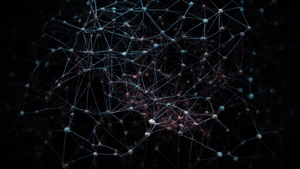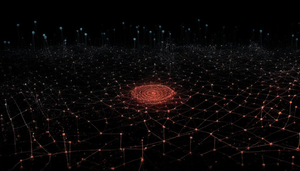Unsupervised Learning

Unsupervised learning is a type of machine learning where the model is trained on unlabeled data without any guidance or feedback. Unlike supervised learning, there are no predefined target outputs for the algorithm to predict and learn from. Instead, the algorithm explores the data and finds patterns, relationships, and structures on its own.
Types of Unsupervised Learning
Clustering
- Clustering is a common technique in unsupervised learning that involves grouping similar data points together.
- One popular clustering algorithm is K-means, which partitions data into K clusters based on similarity.
- Another approach is hierarchical clustering, which creates a tree of clusters where each node represents a cluster of data points.
Dimensionality Reduction
- Dimensionality reduction techniques aim to reduce the number of features in a dataset while preserving its important characteristics.
- Principal Component Analysis (PCA) is a widely used dimensionality reduction method that identifies orthogonal axes (principal components) along which the variance of the data is maximized.
- t-SNE (t-Distributed Stochastic Neighbor Embedding) is another technique commonly used for visualizing high-dimensional data in lower dimensions.
Anomaly Detection
- Anomaly detection focuses on identifying rare events or outliers in a dataset that do not conform to expected patterns.
- Methods like Isolation Forests and One-Class SVM (Support Vector Machine) are commonly used for anomaly detection.
Applications of Unsupervised Learning
Market Segmentation:
Companies can use clustering algorithms to identify distinct groups within their customer base for targeted marketing strategies.
Image Compression: Dimensionality reduction techniques like PCA can be applied to compress images by representing them with fewer features while maintaining image quality.
Fraud Detection:
Anomaly detection algorithms help financial institutions detect unusual transactions that may indicate fraudulent activities.
Natural Language Processing: Unsupervised methods are utilized in NLP tasks such as topic modeling and word embeddings to uncover hidden patterns in text data.
Challenges of Unsupervised Learning
- One major challenge in unsupervised learning is evaluating the performance of algorithms since there are no clear metrics like accuracy or loss available without labeled data.
- Another difficulty lies in interpreting results and ensuring that discovered patterns are meaningful and not just artifacts or noise from the input data.
This comprehensive overview provides insights into unsupervised learning methods, applications across various domains, and challenges associated with this exciting field in machine learning.
Sponsored
Sponsored
Sponsored
Explore More:

Model Evaluation and Selection
Topic model evaluation and selection are crucial steps in the process of building...

Feature Engineering
Feature engineering is the process of selecting, creating, and transforming features (inputs) in...

Natural Language Processing (NLP)
Natural Language Processing (NLP) is a subfield of artificial intelligence that focuses on...

Neural Networks and Deep Learning
Neural networks are a class of algorithms modeled after the human brain's neural...

Reinforcement Learning
Reinforcement learning is a branch of machine learning concerned with how intelligent agents...

Dimensionality Reduction: Autoencoders
Autoencoders are a type of artificial neural network used for learning efficient representations...

Dimensionality Reduction: Factor Analysis
Factor analysis is a powerful technique used in the field of machine learning...

Dimensionality Reduction: Independent Component Analysis (ICA)
Independent Component Analysis (ICA) is a dimensionality reduction technique commonly used in machine...

Dimensionality Reduction: t-Distributed Stochastic Neighbor Embedding (t-SNE)
Dimensionality reduction is a fundamental technique in machine learning and data visualization that...

Dimensionality Reduction: Principal Component Analysis (PCA)
Principal Component Analysis (PCA) is a popular dimensionality reduction technique used in machine...

Unsupervised Learning: Dimensionality Reduction
Unsupervised learning dimensionality reduction is a crucial concept in machine learning that deals...

Clustering: Gaussian Mixture Models
Clustering is a fundamental unsupervised learning technique used to identify inherent structures in...

Clustering: DBSCAN
DBSCAN (Density-Based Spatial Clustering of Applications with Noise) is a popular clustering algorithm...

Clustering: Hierarchical Clustering
Hierarchical clustering is a popular unsupervised machine learning technique used to group similar...

Clustering: K-Means
Clustering is an unsupervised machine learning technique that aims to partition a set...

Unsupervised Learning: Clustering
Unsupervised learning clustering is a fundamental concept in machine learning that involves identifying...